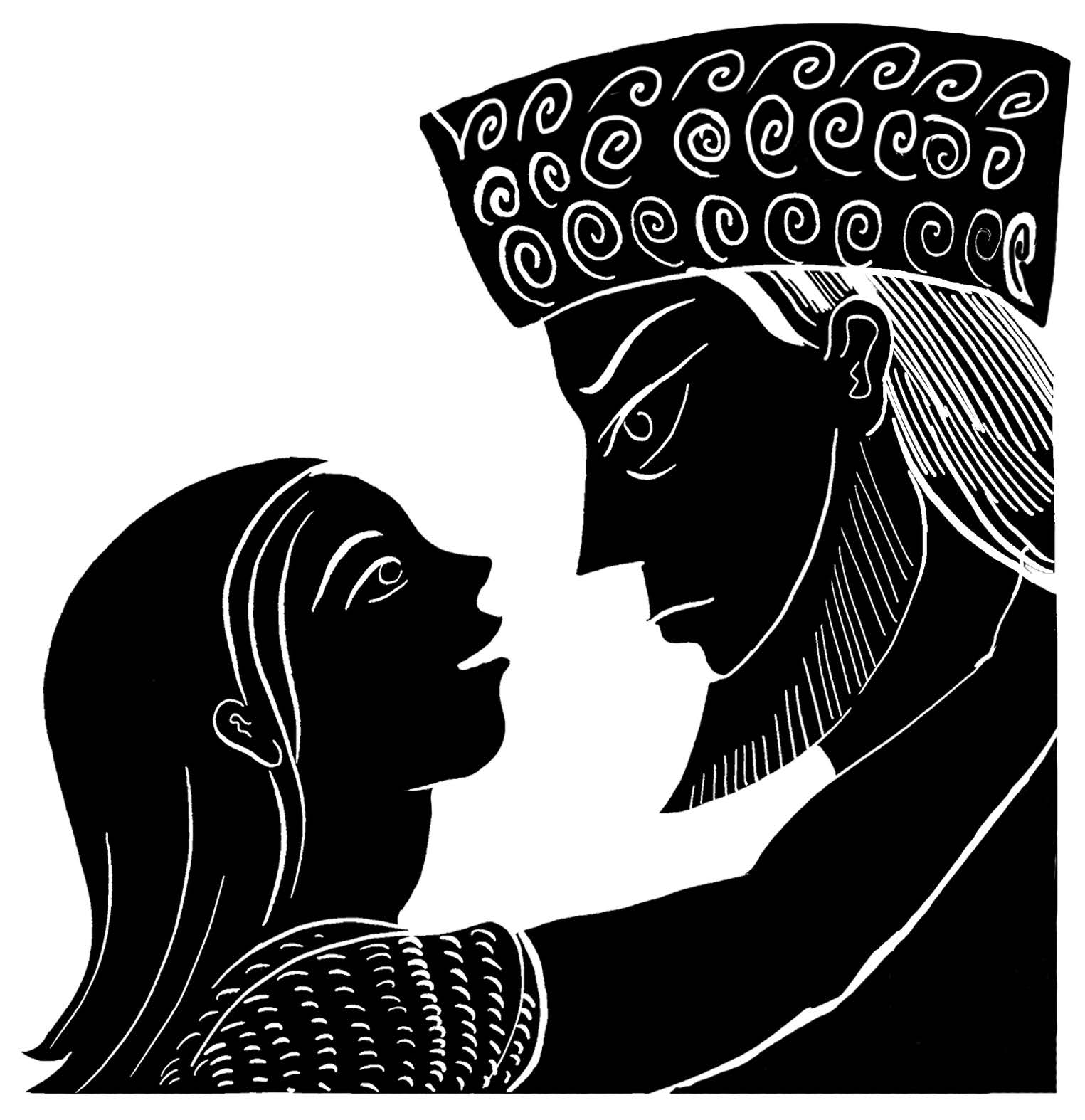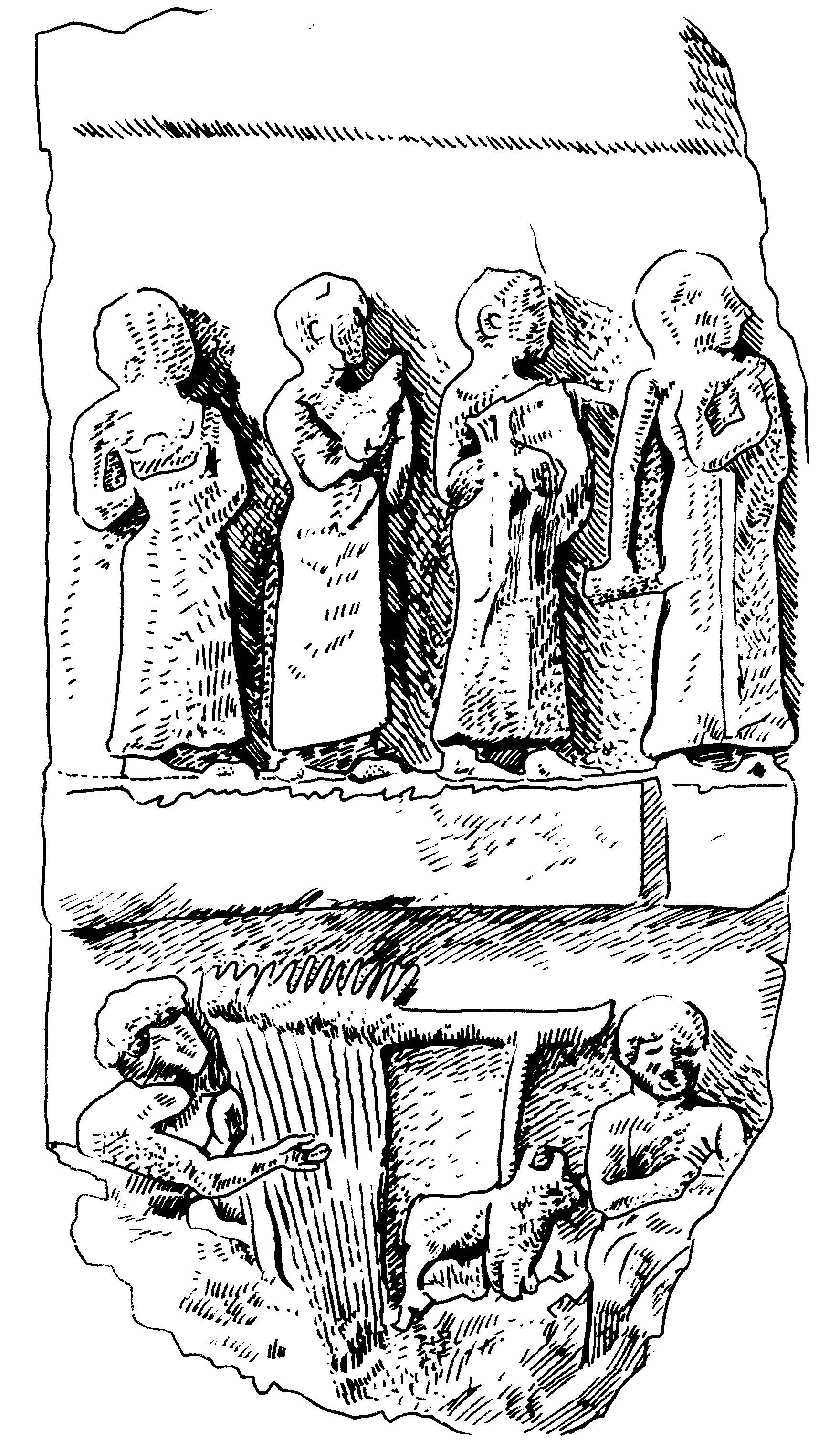-
John Curtis Franklin, Kinyras: The Divine Lyre
List of Figures
Preface
Conventions and Abbreviations
Introduction
1. Kinyras and Kinnaru Part I: The Cult of Kinnaru
2. Instrument Gods and Musician Kings in Early Mesopotamia: Divinized Instruments 3. The Knr 4. Starting at Ebla: The City and Its Music 5. Mari and the Amorite Age: The City and Its Music 6. Peripherals, Hybrids, Cognates 7. Kinnaru of Ugarit 8. David and the Divine Lyre Part II: Kinyras on Cyprus
9. Kinyras the Kinyrist 10. Praising Kinyras 11. Lyric Landscapes of Early Cyprus 12. Kinyras the Lamenter 13. The Talents of Kinyras 14. Restringing Kinyras 15. Crossing the Water 16. The Kinyradai of Paphos Part III: Kinyras and the Lands around Cyprus
17. Kinyras at Pylos 18. The Melding of Kinyras and Kothar 19. Kinyras, Kothar, and the Passage from Byblos: Kinyras, Kinnaru, and the Canaanite Shift 20. Kinyras at Sidon? The Strange Affair of Abdalonymos 21. Syro-Cilician Approaches Appendices
Appendix A. A Note on ‘Balang’ in the Gudea Cylinders Appendix B. Ptolemy Khennos as a Source for the Contest of Kinyras and Apollo Appendix C. Horace, Cinara, and the Syrian Musiciennes of Rome Appendix D. Kinyrízein: The View from Stoudios Appendix E. The ‘Lost Site’ of Kinyreia Appendix F. Theodontius: Another Cilician Kinyras? Appendix G. Étienne de Lusignan and ‘the God Cinaras’ Balang-Gods, Wolfgang Heimpel Bibliography
Appendices

Appendix A. A Note on ‘Balang’ in the Gudea Cylinders
The balang was the usual instrument of the gala’s song. But the description of Ušumgal-kalama in the Gudea Cylinders shows that, in the third millennium at least, a balang could also appear in the hands of the nar. [1] The identity of the balang has long been controversial. But it is now quite certain that this word, of perhaps onomatopoeic origin, originally denoted a stringed instrument (before undergoing a notorious semantic shift to ‘drum’ by or in the OB period, perhaps due to changes in performance practice). [2] Crucial is the equation of balaĝ with kinnārum in early lexical texts from Ebla and Mesopotamia (ca. 2400). [3] Gabbay has advanced new arguments for identifying the early balang as a kind of lyre on a triple basis of iconography, the expression GU4.BALAĜ (‘balang-bull’ [4] ), and the shape of the BALAĜ sign itself, which he derives from the bull-lyre prominent in Sumerian art of the third millennium. [5] But debate continues: Heimpel now counters with an attractive defense of the older curved-harp identification, again proceeding from iconography and sign-evolution. [6] Of course we must beware of projecting modern organological distinctions onto ancient perceptions; the morphological difference between ‘lyre’ and ‘harp’, as defined by von Hornbostel and Sachs, may have been less significant than performance functions. [7] Consequently, the analyses of this book do not stand or fall with one identification of balang or another.

Figure 47. Sumerian Bull-headed lyre with ‘emergent’ bull. Stele-fragment, Lagash, before 2100. Paris, Louvre AO 52. Drawn from MgB 2/2 fig. 45.
Of course, one may still question the meaning of balang in the Gudea Cylinders, which one might suppose are late enough to have used the word in its secondary sense. Thus, some would identify Ušumgal-kalama with the giant drum shown several times in the steles, an apparent prominence that would well fit (the argument goes) the balang-god’s importance implied by his year-name. [8] But S. Mirelman has now shown that the giant drum, both here and in the Ur-Nammu stele, is in fact the á-lá. [9] This instrument, too, is featured in the cylinders, being played for instance in a group that accompanies the making of bricks. [10] The relevant steles may therefore show the instrument as part of the building process, rather than the bestowal of gifts during the temple’s inauguration. [11] Moreover, the giant drum’s visibility is counterbalanced by another stele-fragment from Lagash showing a typical bull-headed lyre (Figure 47). [12] It is surmounted by a smaller bull—a visual echo that seemingly “anime l’objet d’une sorte de vie.” [13] Stylistic considerations indicate that this stele is rather earlier than Gudea’s own building program. [14] Nevertheless, there are significant sympathies with the iconography and poetics of the Gudea steles. An upper register shows a procession of figures carrying building and measuring tools, presumably on their way to a construction site. [15] They are preceded by a ruler, whose role is thus comparable to that of Gudea as royal overseer. So here the bull-lyre has all the associations that have been thought to make the giant drum of the Gudea steles worthy of identification with Ušumgal-kalama. Note too the ‘Hall of the Balang’(part of the temple of Ningirsu), which the Gudea Cylinders liken to the sound of a ‘roaring bull’—an apt description if the balang was in fact the bull-lyre. [16]
All told, therefore, one is well justified in supposing that the balang-gods of Ningirsu were indeed stringed instruments. [17]
Footnotes
[ back ] 1. See p28; cf. Shehata 2006a:120 and n8; Gabbay 2014 §11n31; PHG:103 on the expression nar.balaĝ: “According to my understanding, the tigi and the balaĝ were the same type of instrument (at least originally), the difference between them being their cultic context: the balaĝ was associated with the repertoire of the gala, and the tigi (written with the signs BALAĜ and NAR) with the repertoire of the nar.” For several other Sumerian terms containing the element balaĝ, without necessarily referring to the gala, see PHG:82n4. For comparable evidence from Ebla, see p65–67.
[ back ] 2. The basic sources and issues may already be found in Hartmann 1960:52–67. See now Gabbay 2014, especially §2–5; PHG:67–68, 98–102, 153–154. Onomatopoeic origin: Selz 1997:195n153; Heimpel 1998b:2; Gabbay 2014 §2n7; Heimpel, “Balang-Gods,” 4g.
[ back ] 3. I stressed the evidence from Ebla in Franklin 2006a:43n8; see further p54, 65–67.
[ back ] 4. The order of signs makes the translation ‘balang-bull’ preferable to ‘bull-balang’ (W. Heimpel, communication, October 10, 2013).
[ back ] 5. Gabbay 2014 §2, and PHG:92–98. Bull-headed lyres have often been identified by scholars as zà.mí (see the review of Lawergren and Gurney 1987:40–43 and the problems raised there); but Gabbay notes that, while the Akkadian equivalent sammû is well-attested in the first millennium, bull-lyres have all but disappeared (§2n9). Bull-lyres: MgB 2/2:28–35, 38–41, 44–45, 50–51, 60–61, 64–67, all with figures.
[ back ] 6. Heimpel 2014; “Balang-Gods,” Section I.
[ back ] 7. See further p3n14, 90–93, 391–392.
[ back ] 8. Suter 2000:ST.9, (p. 350), 13 (p. 358), 54 (p. 386). The image is connected with the balang by Jean 1931:159; Black 1991:28 and n39; Suter 2000:193 and Civil 2008:100 follow Black in considering balang unambiguously a drum in the time of Gudea (98n138); but note that Black himself was “at a loss” to explain the lexical evidence from Ebla (see p54, 65–67). It might also be felt that the name ‘Great Dragon of the Land’ is more appropriate to the sound of a giant drum than a lyre. Yet PHG:113–114 includes Ušumgal-kalama among those balang-gods who bear names that reflect properties of their master-god, since Ningirsu is “often portrayed as a snake (ušum).”
[ back ] 9. Mirelman 2014, arguing from the huge size and weight indicated by textual sources. Moreover, as Mirelman notes in a postscript, the á-lá is often connected with the si-im (e.g. both are found in the ‘balang-hall’ of Eninnu: Gudea Cylinders A 28.18); and since the latter’s identification as cymbals in Ur III and later texts is secured by their occurrence in pairs and being made of copper and bronze (Mirelman 2010), one may identify as á-lá and si-im, respectively, the giant drum and cymbals that are paired in the Ur-Nammu and Gudea steles (Gudea: Suter 2000:ST.54, cf. p191; Ur-Nammu stele: MgB 2/2:72–73 (fig. 54–55); Suter 2000, figures on pp. 245–259).
[ back ] 10. Gudea Cylinders A 18.18. It appears also at A 28.18 (in the ‘balang-hall’); B 15.20 (among the instruments governed by Ušumgal-kalama); B 19.1, accompanying Ušumgal-kalama when Gudea goes into Eninnu to sacrifice).
[ back ] 11. For the former view, see Mirelman 2014, under “Performance Contexts. a) Building rituals”; the latter is espoused by Suter 2000:190–195.
[ back ] 12. de Sarzec 1884–1912 2, pl. 23 (discussed 1:219–220); MgB 2/2:66–67 (fig. 45); Suter 2000:ST.10 (p. 352).
[ back ] 13. The quotation is from de Sarzec 1884–1912 1:220, whose observation avails even if the second bull represents a physical feature. Another such ‘double-bull’ lyre is shown on a stamp-seal found at Falaika in the Persian Gulf, now in the Kuwait Museum: Barnett 1969:100–101 with fig. 1 and pl. XVIb; RlA 6:580 (Collon, *Leier B).
[ back ] 14. See Suter 2000:184–185, suggesting it might show a governor of Lagash during the period of Akkadian rule.
[ back ] 15. Suter 2000:264.
[ back ] 16. Gudea Cylinders A 28.17; George 1993:63 §4; RlA 8:468 (Kilmer, *Musik A I); Heimpel 1998b:4 and 15n8; Gabbay 2014 §13n37. Another “Chamber of the balang” is found as a shrine of the god Gula in a cultic lament, later qualified as “Chamber of the Princely balang”: George 1993:85 §293, 708; cf. RlA 8:468 (Kilmer, *Musik A I).
[ back ] 17. See also Heimpel’s argument that Ušumgal-kalama was a lute: “Balang-Gods,” Section 1b.


